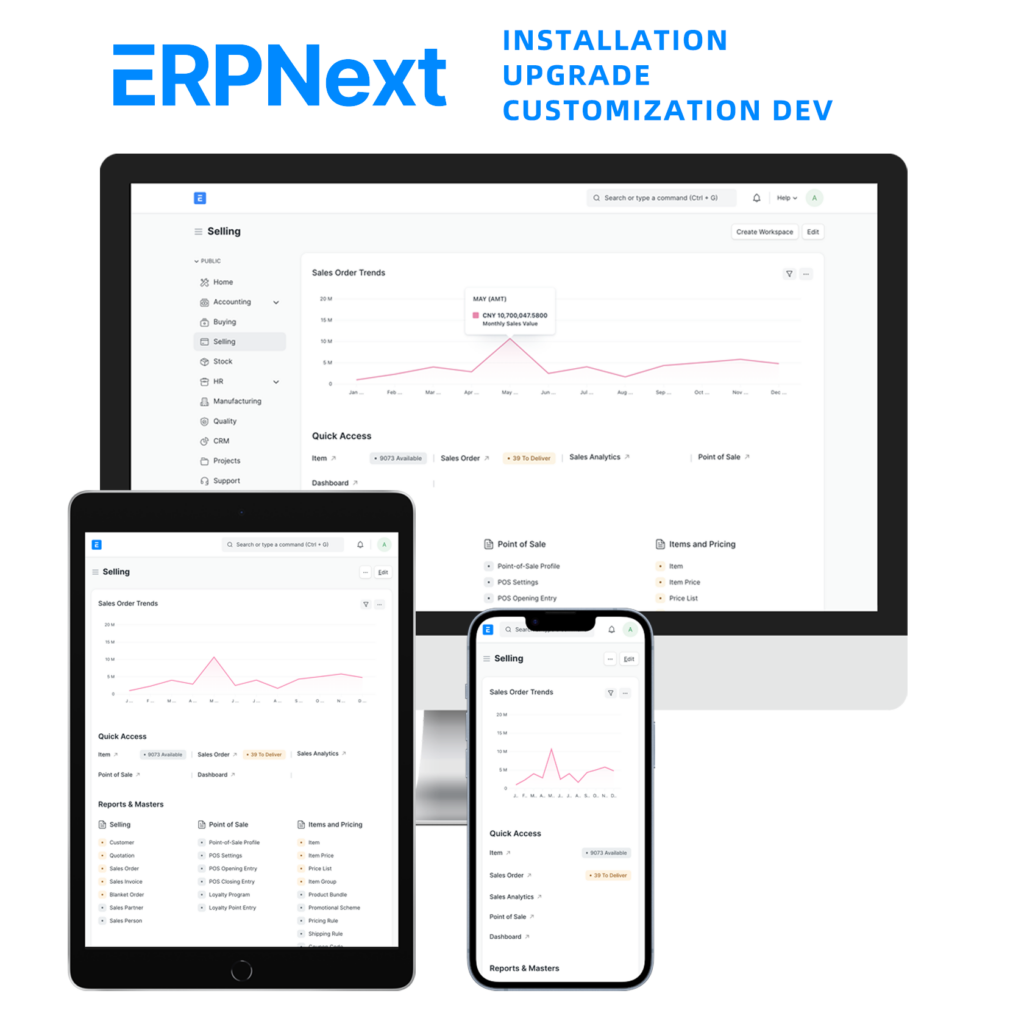
1. System Roles: Who Does What?
- ERP (Enterprise Resource Planning)
ERP is the “brain” of enterprise management, overseeing finance, procurement, inventory, sales, HR, and more. It centralizes data and provides the foundation for other systems to share information. - MES (Manufacturing Execution System)
MES is the “commander” at the shop-floor level, handling production execution, quality control, real-time data collection, and monitoring to ensure plans are executed efficiently. - WMS (Warehouse Management System)
WMS acts as the “warehouse manager,” managing everything from receiving and storage to picking and shipping with precise inventory control. - CRM (Customer Relationship Management)
CRM connects the enterprise with customers, managing customer information, sales support, and after-sales service. Integrated with ERP, it allows sales and supply chain to work seamlessly together.
2. System Collaboration: How Do They Work Together?
- ERP ↔ MES: From Planning to Execution and Feedback
ERP generates production orders, BOMs, and production plans; MES executes the shop-floor tasks and reports progress, quality, and output back to ERP for cost analysis and future planning.
Case Example: ERP sends production orders to MES; MES completes production and sends data back to ERP for cost calculation and performance evaluation. - ERP ↔ WMS: Real-Time Inventory Synchronization
ERP handles inventory planning, procurement, and sales data; WMS manages warehouse operations and real-time inventory status to keep supply chain accurate and efficient. - ERP ↔ CRM: Customer-Driven Business Integration
CRM collects customer orders, feedback, and history; ERP follows up on inventory, shipping, and billing, improving responsiveness and customer satisfaction.
3. Real Case Example: A Smart Home Appliance Company
Let’s take a fictional company, SmartAppliance Co., as an example of how ERP, MES, WMS, and CRM work together:
- Order Creation (CRM → ERP)
Customers place orders via the CRM system. CRM sends order information to ERP, which updates sales forecasts, inventory, and production plans. - Production Scheduling (ERP → MES)
ERP creates production plans; MES receives the work orders, schedules production lines, tracks material usage, and monitors equipment status. - Warehouse Operations (ERP ↔ WMS)
MES requests materials; WMS executes picking, shipping, and updates real-time inventory data back to ERP for financial and procurement planning. - Production Feedback (MES → ERP → CRM)
MES reports production status and quality data to ERP; ERP updates shipping plans and costs; CRM synchronizes this so customers can see their order status. - After-Sales Service (CRM ← ERP)
If customers need maintenance, CRM queries ERP and MES for production and quality records, providing accurate after-sales service.
4. Integration Approaches and Key Technologies
- Integration Methods: Middleware or APIs (e.g., Web Services, database sync) are commonly used to connect systems.
- Standards Support: Industrial standards such as ISA-95 guide ERP–MES data flows and interface standardization.
- Modern Trends: IoT integration, PLM (Product Lifecycle Management), and real-time monitoring are enabling smart manufacturing and traceability.
5. Summary & Recommendations
- Summary:
ERP is the “general manager,” MES is the “shop-floor commander,” WMS is the “warehouse manager,” and CRM is the “customer liaison.” Together, they form a closed-loop management system from order to delivery. - Recommendations for Enterprises:
- Start with ERP as the foundation, then gradually integrate MES, WMS, and CRM based on business needs.
- Use standardized interfaces and middleware for reliable system communication.
- Align system upgrades with process optimization to ensure successful implementation.